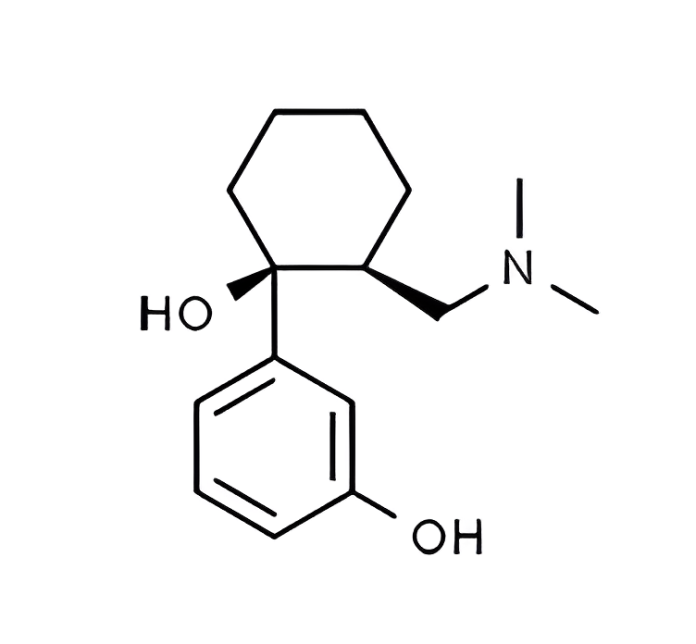There’s been a growing interest in the research chemical O-DSMT (O-desmethyltramadol) in recent years. This substance, which comes from tramadol, has drawn attention for its potential use as a recreational drug and as a subject of scientific research. This article will provide a review of O-DSMT, its history, administration, user experiences, the onset of effects, and potential side effects.
General Information on O-DSMT
To begin our research chemical review, we’ll provide general information on the drug. O-DSMT, or O-desmethyltramadol, is a synthetic opioid. It’s an active metabolite of tramadol, a strong pain reliever for intense pain relief. This drug has been classified as a research chemical since it recently emerged, and there’s limited research on its effects. Despite this classification, O-DSMT has picked up a following in the recreational drug community for its opioid-like properties. Those include pain relief, sedation, and euphoria, as you’ll read more about later.
The O-DSMT research chemical acts on the mu-opioid receptor, similar to other opioids. That’s how it makes the well-known and desirable analgesic (pain-relieving) effects. However, its potency is believed to be even higher than tramadol. For recreational drug users, that makes it even more appealing. While it shares some characteristics with other opioids, O-DSMT has unique properties that make it stand out from traditional drugs in this category.
As a research chemical, O-DSMT remains a substance of interest for scientists studying its pharmacology, effects, and potential therapeutic uses. Its legal status varies across countries. Some classify it as a controlled substance, while others have yet to remove it from the list of legal drugs.
History of O-DSMT
Next in our O-DSMT review, we’ll cover this drug’s history. It dates back to the development of tramadol in the 1960s by the German pharmaceutical company Grünenthal GmbH. Tramadol was introduced as a potent analgesic with fewer side effects than traditional opioids. Over time, researchers found that one of tramadol’s active metabolites, O-desmethyltramadol, played a key role in its pain-relieving effects.
In the early 2000s, O-DSMT drew attention as a research chemical. The first known human use of the drug was in 2010. As the substance’s popularity went up, so did its presence in online forums made for discussing experiences with research chemicals. At the time, people looking for legal highs were buying this drug as it was unregulated.
In the mid-2010s, several countries, including the United States and the United Kingdom, began to classify O-DSMT as a controlled substance. As a result, it became illegal to possess, distribute, or manufacture. Despite its legal status, the O-DSMT research chemical remains popular and continues to be a subject of scientific inquiry.
Dosage and Administration
There are several ways to take O-DSMT, each with its onset time, duration, and intensity of effects. The most common routes of administration include oral consumption, nasal insufflation, vaporization, and suppository. Generally, doses range from 5 to 80mg.
Oral Administration
When taken orally, O-DSMT is typically ingested in capsule or tablet form. The onset of effects can take anywhere from 30 minutes to 2 hours, with the peak effects occurring around 3-4 hours after ingestion. The overall duration of effects can last up to 8 hours. This method has a slower onset and longer duration compared to other routes of administration.
Nasal Insufflation
Nasal insufflation, or “snorting,” involves inhaling O-DSMT powder through the nose. This method results in a faster onset of effects, usually within 5-15 minutes, with peak effects occurring around 1-2 hours after administration. The overall duration of effects typically lasts 4-6 hours. Nasal insufflation causes a more rapid onset and shorter duration than oral consumption, but it can be harsh on the nasal passages.
Vaporization
When users vaporize O-DSMT, they heat the substance until it turns into vapor, then inhale it. This method has the fastest onset of effects, usually within 1-5 minutes, with peak effects occurring around 30-60 minutes after taking it. The overall duration of effects generally lasts 3-4 hours. Vaporization offers a rapid onset and shorter duration compared to other methods, but it requires specialized equipment and can be more difficult to control the dosage.
Suppository
Suppositories involve inserting a solid form of the O-DSMT research chemical into the rectum, where it dissolves and is absorbed into the bloodstream. This method has a relatively quick onset of effects, typically within 15-45 minutes, with peak effects occurring around 2-3 hours after administration. The overall duration of effects can last up to 6 hours. Suppositories offer a more rapid onset than oral consumption and a longer duration than vaporization, but they can be uncomfortable for some users.
Redosing
Redosing with O-DSMT can increase the risk of side effects and dependence. It is essential to carefully monitor the dosage and avoid excessive consumption.
User O-DSMT Reviews
O-DSMT users report various experiences, depending on the method of administration and individual factors. Common themes include a warm, euphoric sensation, pain relief, relaxation, and sedation.
Onset of Effects
The onset of effects for O-DSMT varies depending on the method of administration, as described above. Users generally report a faster onset with vaporization and nasal insufflation, while oral consumption and suppositories have a slower onset.
Relaxation
Many users of O-DSMT report a profound sense of physical and mental relaxation. This sensation is often described as a feeling of warmth and calm that washes over the body, similar to the effects of other opioids. Users may find that their muscles become less tense and they feel more at ease in their environment. This sense of relaxation may contribute to the overall appeal of O-DSMT, as it provides a temporary escape from stress and anxiety.
Pain Relief
One of the primary reasons people use O-DSMT is its potent analgesic (pain-relieving) properties. Users often report significant pain relief when using the substance. It can range from a mild decrease in discomfort to completely eliminating pain. This effect appeals to those suffering from chronic pain or acute injuries. However, self-medicating with O-DSMT is risky. It can lead to dependence and other negative side effects.
Visual or Auditory Hallucinations
While not as common as the relaxation and pain-relief effects, some users of O-DSMT have reported experiencing mild visual or auditory hallucinations. These experiences can manifest as subtle distortions in perception, like seeing patterns or shapes, hearing sounds or music that is not present, or having a heightened awareness of one’s surroundings. These hallucinations are generally less intense than those associated with traditional hallucinogenic substances, such as LSD or psilocybin. For some users, these perceptual changes may be seen as an enjoyable aspect of the O-DSMT experience. Others may find them disorienting or unsettling.
Anticlimax (“Comedown”)
As the effects of O-DSMT wear off, users may experience a comedown, including feelings of lethargy, depression, and irritability. Proper self-care and hydration during the comedown phase can help alleviate these symptoms.
Potential Side Effects of O-DSMT
As with any substance, O-DSMT use risks potential side effects. Some common side effects include the following:
- Nausea and vomiting
- Constipation
- Dizziness
- Dry mouth
- Itching
- Respiratory depression
- Increased heart rate
- Anxiety and restlessness
- Insomnia
- Sweating
Use caution when experimenting with O-DSMT and closely monitor dosage, as higher doses increase the risk of side effects. If any severe side effects occur, seek medical attention immediately.


